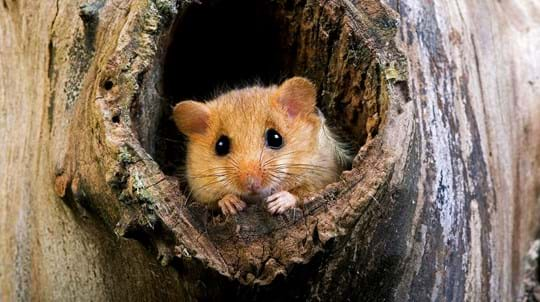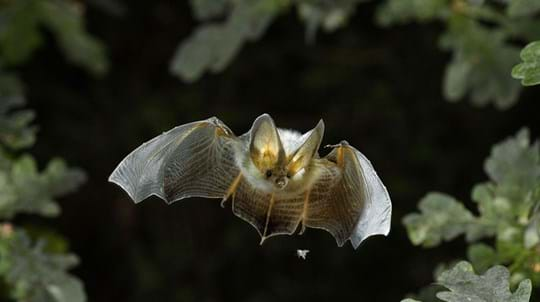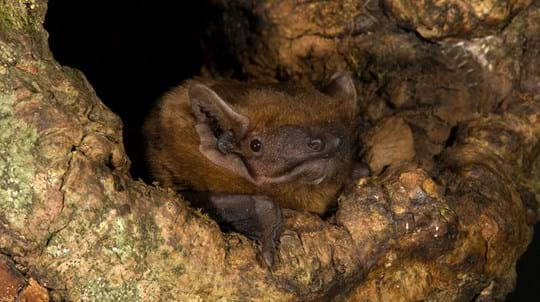
Credit: David Chapman / Alamy Stock Photo
Hibernation
Noctule bats hibernate over winter, usually between November and April. They primarily hibernate in trees and occasionally buildings, rock fissures and bat boxes.
Often seen flying high above the tree-tops, the noctule bat is the largest bat in the UK. This species relies on tree holes to roost in and is often confused for a swift when on the wing.
Common name: noctule bat
Scientific name: Nyctalus noctula
Family: Vespertilionidae
Habitat: woodland
Diet: beetles, midges, moths
Predators: hawks, owls
Origin: native
The largest bat in Britain, the noctule measures 4-5cm in length and weighs up to 40g. It has golden-brown fur with a darker brown face and wings. Its small, rounded ears are also dark brown and have a mushroom-shaped tragus, the bit of flesh in front of the ear canal.
The noctule bat’s diet is made up of insects; particularly moths, winged ants, midges and flying beetles. It hunts at night, although it may emerge before dark during the summer months. It catches its prey on the wing, using its powerful flight to dive and catch insects from above the tree canopy.
Despite being the UK’s largest bat, the noctule could still fit in the palm of your hand.
The breeding season for noctule bats takes place towards the end of summer. Some males form groups while others are solitary. The male finds a tree hole to be his mating roost and attempts to attract a mate using a range of shrill calls and by producing a strong odour during flight. Males will often mate with several females.
Maternity colonies are not formed until the following spring when both males and females begin to nest in tree holes, crevices in buildings and nest boxes. Females give birth to one pup during late June or July, and the pup is usually independent after six weeks.

Credit: David Chapman / Alamy Stock Photo
Noctule bats hibernate over winter, usually between November and April. They primarily hibernate in trees and occasionally buildings, rock fissures and bat boxes.
Noctule bats are woodland inhabitants, living in the rot holes in trees as well as woodpecker holes. They are widespread in England and Wales, with some numbers in south-west Scotland.
The noctule bat is often mistaken for a swift when in flight, as they fly so high up.
Head to the woods just before dark for the best chance of seeing this species. Noctule bats are high flyers, flying above the tree canopy, so keep your eyes to the sky to catch sight of one. See if you can spot them repeatedly diving in the sky as they hunt their insect prey.
While the noctule bat is widespread in the UK, it is thought the population may have declined following the introduction of intensive farming methods. It is also vulnerable to the loss of mature trees, which it uses as nesting and hibernation sites. The noctule bat is classified as a priority species in the UK Biodiversity Action Plan. It is also protected by law in the UK under the Wildlife and Countryside Act 1981.

Trees woods and wildlife
Trees and woods provide a stable habitat and food supply for many mammals. What will you spot?

Trees woods and wildlife
Discover why woods and trees are important to the roosting, foraging and navigation needs of bats.

Blog
Joe Bates • 03 Dec 2018

Woodland wildlife is fading before our eyes. Please support our appeal to save rare and threatened species.
Donate now